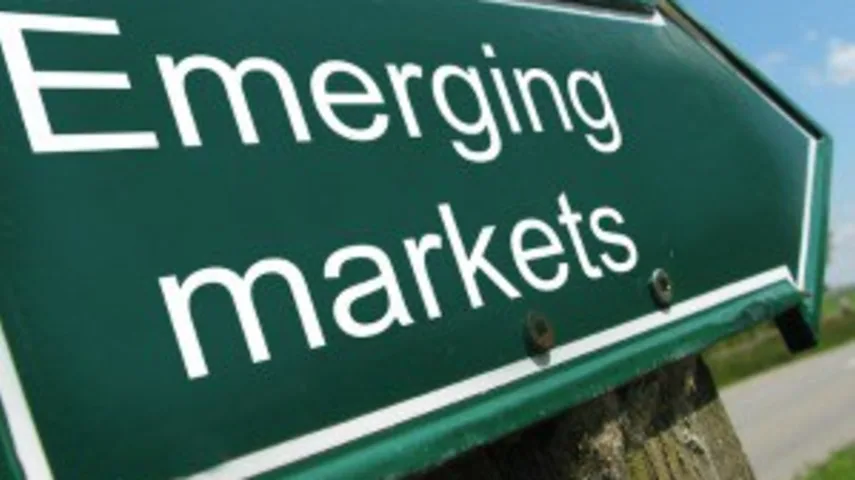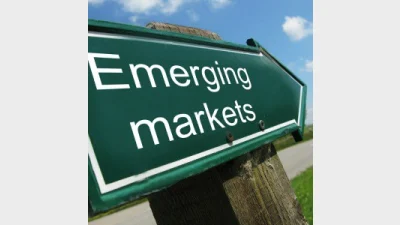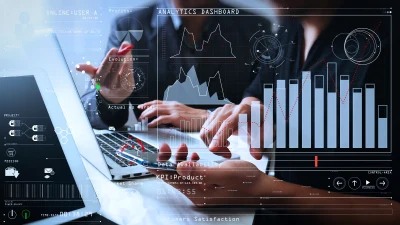What should investors look for in an emerging markets company?



In a complex and fast-changing developing world, under the backdrop of the Fourth Industrial Revolution, investors are for the first time in centuries looking to the emerging markets (EMs) for a peek into the playbook of innovation. We believe that investors will increasingly adjust their approach to the asset class that represents the majority of humanity.
Looking back, we at Lazard, have been fortunate to have had a first-row seat in emerging market investing over the past 20 years, from the Tequila crisis in Mexico to China’s integration into the world economy, and we believe there is a now a fundamental shift underway in how investors will need to approach these markets.
We believe that it means thinking beyond traditional sector and country groups, constructing portfolios based on the company’s specific runway and durable competitive advantage. In addition, one needs to understand the local macroeconomic and political dynamic in which companies operate. We believe the opportunity is appreciating that EMs are not a monolithic asset class and that traditional sector classifications don’t fully capture the nuance and diversity that exits.
Back in the 1990s and early 2000s, EM business models were following the developed world business models. Companies were less complex and investor returns were driven by tangible asset growth. Predominantly, investors could choose amongst traditional banks, energy and telecoms companies. At that time, value was driven by a company’s ability to access capital and grow investor value through its asset base. Capital was the key determinant in a company’s ability to grow as it drove down competition and gave the business scale, allowing it to generate high levels of financial productivity, which translated into shareholder value.
Fast forward to today, capital is still important, but it is no longer the primary determinant of a company’s ability to generate shareholder returns. Value is increasingly being driven through intangible factors, amongst which management skill is a key determinant. Today’s EM companies need management that can drive businesses to innovate and adapt because these markets are now much more economically complex.
In many industries, EM is at the forefront of change and innovation, which means that disruption, technological or otherwise, is happening there before their developed market peers. This requires management that is able to identify and manage through drastic change without any precedent. The fact that there are many industries, ranging from fintech to e-commerce, where EM companies are writing the script is a testament to how much things have changed.
Demographics across EMs are changing and that brings shifting consumer preferences and expectations. Growing middle classes in EMs are now demanding sophisticated products and services, ranging from ridesharing to luxury goods, and management must be responsive to scale up their businesses to meet these shifting consumer expectations.
Through our ownership mindset to the companies that we consider in our investment portfolio, we concentrate our questions around three key focal points – valuation, return on capital, and runway of opportunity. Valuation is how much we are willing to pay for a business. Return on capital is the company’s ability to achieve a return above its cost of capital and continue to deploy incremental capital at scale. Runway is the magnitude a company is able grow its business through its customer value proposition.
ASSESSING THE RISKS
There are, of course, risks that need to be considered when investing in these companies as there is never a dull moment in EMs. They are always changing. Investors, therefore, need to be conscious of other factors, such as macroeconomic, political, and environmental, social and governance (ESG) themes, that could impact a company.
A good example that illustrates this relationship is a company’s cost of capital. The cost of capital differs across EM countries and Brazil’s is higher than China’s. This is because China, among other things, has a relatively higher savings rate and a higher domestic funding capital base compared with Brazil. Cost of capital is important as it affects the cost of projects and net present value of those investments.
Other factors we assess include political uncertainty – high in countries like Turkey – as well as a country’s legal system, central bank independence and the ease of doing business.
It is also important to understand geopolitical risks particularly as elections can impact businesses. Some state-owned enterprises are more aligned to stimulating economic activity on government directives as opposed to generating profitability for shareholders.
There is always a risk of corporate fraud but thankfully now we have seen a significant improvement in accounting standards in EMs particularly as some of these companies are now seeking to list on global stock exchanges which require greater transparency and disclosure. Therefore, it is important to take a holistic approach to assessing an EM business.
Investors also need to be aware of the concentration risk of traditional benchmarks used in EMs. For example, the MSCI Emerging Markets index includes five companies that today represent 25% of the benchmark. Investors are not getting the diversification benefits from investing in portfolios that track these benchmarks.
HOLISTIC ESG APPROACH
The other key focus in assessing an EM company is understanding their ESG credentials.
Under this framework, we assess the company’s policies on areas such as the environment including the relationship it has with society at large. Governance is also important.
Some of these markets tend to be governed by wealthy controlling families that can influence a way a company does business. We have seen voting rights being influenced in multinational companies by minority shareholders. Governments can also influence companies, shifting their focus away from delivering long-term shareholder returns.
In fact, we have continued to increase our focus on ESG over these last 20 years as we have seen a shift towards deeper thinking around social and governance issues. We see the integration of human and natural capital assessment as the bedrock for sustainable investment.
For example, Bank Central Asia is one of our stock holdings. The bank plays an important part in driving financial inclusion in Indonesia. But we also look at other factors such as how the bank incentivises employees, management’s approach to risk management, and its lending practices to environmentally vulnerable sectors.
We have been increasingly sensitive to lending practices in the palm oil industry. The assessment of these types of human and natural capital factors forms the foundation of our ESG framework.
TREMENDOUS OPPORTUNITIES
Despite the risks, we continue to see tremendous opportunities in EMs particularly as the Fourth Industrial Revolution drives the world economy.
We remember visiting China for the first time soon after China joined the World Trade Organisation in 2001. The companies in Guangdong Province were producing basic products such as footwear and consumer textiles. Today, in the same part of China there are leading technology companies. Guangdong is now home to Tencent, one of the most innovative companies on the planet.
In Korea, there are businesses like NC Soft which is taking gaming to another level and is now a leading gaming publisher in the world. Its business model is attractive because it is highly scalable driving solid revenue.
In India, Reliance Industries has evolved from a petrochemical business to a multinational business that now includes e-commerce and cloud computing. The company has a real opportunity to become the Amazon of India. Even in financial services there is opportunity. HDFC Bank is a major beneficiary of having access to low costs deposits. The bank has healthy net interest margin and one of the lowest costs of capital amongst the Indian banks. In China, JD.COM is investing in technology to drive retail and new runways through its logistics infrastructure.
We feel very fortunate to be an investor in EMs. It is a part of the market that really incentivises and drives an investor’s curiosity. Importantly, there is now real scope to be investing in businesses that are going to become top multinational companies one day which provides great opportunities for proactive investors.
Rohit Chopra is managing director and portfolio manager at Lazard Asset Management.
Recommended for you
As the industry shifts from client-centric to consumer-centric portfolios, this personalisation is likely to align portfolios with investors’ goals, increasingly reflect their life preferences, and serve as a gateway to rewards and benefits.
Managing currency risk in an international portfolio can both reduce the volatility, as well as improve overall returns, but needs to be navigated carefully.
In today’s evolving financial landscape, advisers are under increasing pressure to deliver more value to clients, to be faster, smarter, and with greater consistency.
Winning one premiership can come down to talent, luck, or timing but winning multiple ones indicates something deeper and successful is at play, writes Darren Steinhardt.










